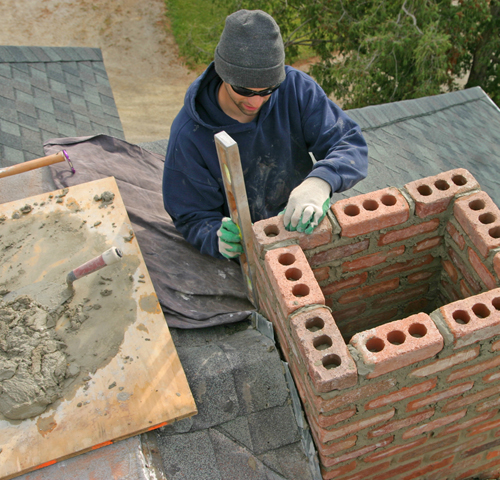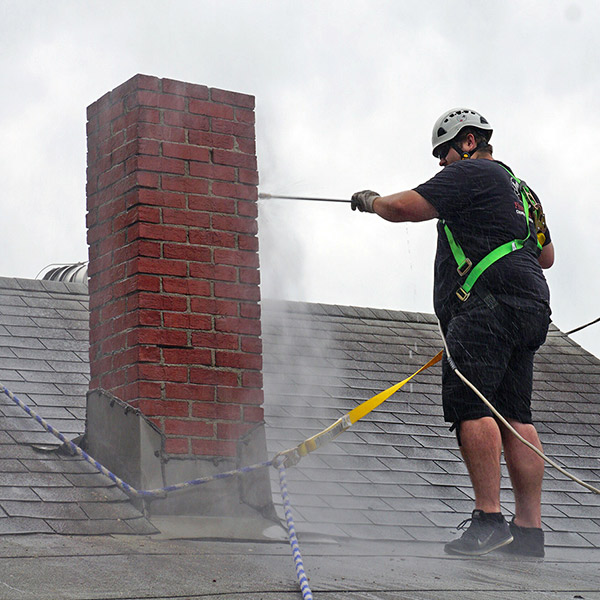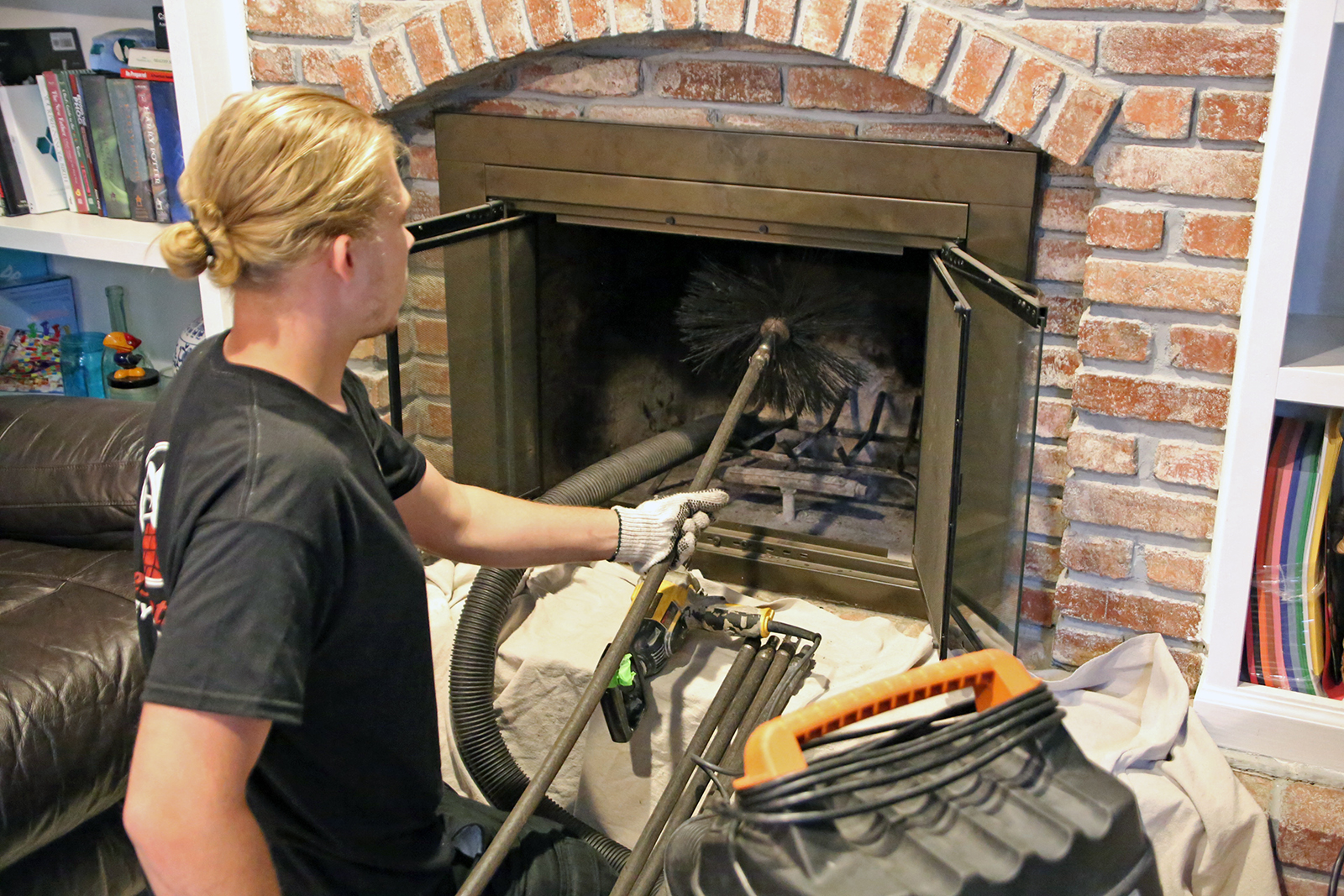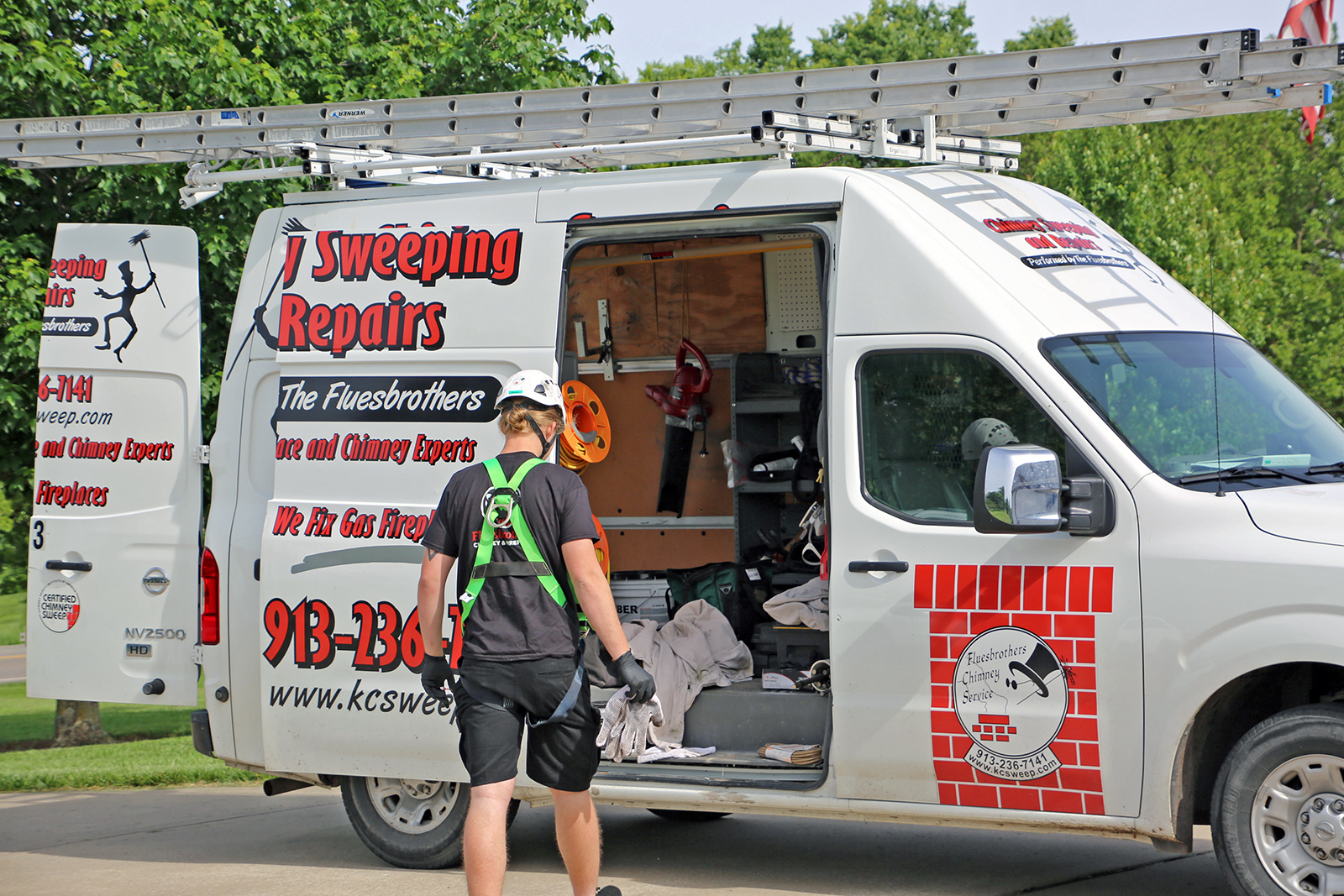The 5 Signs of a Chimney Water Leak

After many days of rain, I spent time last night dining outside at a local restaurant. Even though it was a bit chilly, it felt great getting some fresh air. As all of our tables were ‘socially distant’, my ears are always aware of interesting conversations around me. The one that caught my attention was the conversation about a stain that formed on the corner ceiling and wall in their family room.
I listened to the person’s thoroughness of trying to uncover the source of the problem. I heard how they cleaned out the gutters, and checked for any missing roofing tiles. Nothing. They called out a roofer to inspect for any problems with the roofing system. Nothing. What didn’t they do? Consider the chimney.
Many people forget that the tallest point on the home is most vulnerable to the elements outside. This past week is a perfect example. The chimney experienced constant rain, high winds, and a drastic change in temperature. That’s a perfect storm for water leaks in a chimney.
Water leaks can appear in many different forms. Here are the top 5:
- Water stains, discoloration, visible leaks and moisture on the walls or ceilings around the chimney
- Musty odor coming from the fireplace especially after the rains
- Hearing the drips of water coming into the chimney, some slow, some much faster
- Water or condensation inside of the fireplace
- Problems with the interior or exterior masonry such as cracks or spalling
If any of these experiences are currently happening in and/or around your fireplace, then you need to call Superior Chimney to get that fixed right away.
But Wait! I Don’t Use the Fireplace, or It Hasn’t Been Turned On Yet!
Even though you don’t use the fireplace, or you have a gas fireplace, the elements outside are still active. Rain, snow, hail, wind and temperature change are constantly in motion causing deterioration to the chimney. That’s why it’s important to have the chimney checked each year. As part of the 14-point inspection, a certified technician will carefully check the interior and exterior chimney condition.
Some of the points we’re looking at outside that are the most common causes of water leaks are:
The certified technician will take pictures of the chimney outside. We use these pictures to explain what we look for and inform you of any findings. Once we’re done, we will email the pictures to you for your own personal records.
Remember…
It’s important to remember…chimneys are an integral part of your home, and most home heating systems, with lots of different parts making up their structure. Keep it in good working order by having the chimney 14-point inspection done each year. This way you’ll never need to worry about me listening in on your conversation.
Contact Superior Chimney for a 14-point inspection and chimney sweep at 877-244-6349.
This post first appeared on https://www.superiorchimney.net
 What is chimney rebuilding?
What is chimney rebuilding? By scheduling regular inspections, chimney sweeping, and maintenance services, you stand a better chance of avoiding major work on your chimney structure in the future.
By scheduling regular inspections, chimney sweeping, and maintenance services, you stand a better chance of avoiding major work on your chimney structure in the future.
 How to Prepare for Chimney Sweeping Services
How to Prepare for Chimney Sweeping Services Chimney Sweeping is a Vital Service
Chimney Sweeping is a Vital Service
 Chimney cleaning 101
Chimney cleaning 101 How you can help the chimney cleaning process
How you can help the chimney cleaning process Chimney sweeps often have more scheduling flexibility during spring, summer, and early fall. When the cold weather hits, it seems like everybody jumps on the bandwagon at once to schedule cleanings and inspections. It’s a lot easier and safer for chimney technicians to perform outside repair work during nice weather. Chimney repairs that involve mortar compounds (tuckpointing, smoke chamber parging, crown rebuilding, etc.) can be done better and faster before the cold of winter sets in.
Chimney sweeps often have more scheduling flexibility during spring, summer, and early fall. When the cold weather hits, it seems like everybody jumps on the bandwagon at once to schedule cleanings and inspections. It’s a lot easier and safer for chimney technicians to perform outside repair work during nice weather. Chimney repairs that involve mortar compounds (tuckpointing, smoke chamber parging, crown rebuilding, etc.) can be done better and faster before the cold of winter sets in. Certified chimney technicians perform all CSIA-recognized levels of chimney inspections. The basic inspection you should schedule once a year includes an examination of all visible areas of the chimney/fireplace system including the structural masonry, chimney cap/chase cover, chimney crown, roof flashing, firebox and more. Annual chimney inspections let you get on top of early signs of damage or malfunction and have them fixed before extensive – and expensive – repair work is needed.
Certified chimney technicians perform all CSIA-recognized levels of chimney inspections. The basic inspection you should schedule once a year includes an examination of all visible areas of the chimney/fireplace system including the structural masonry, chimney cap/chase cover, chimney crown, roof flashing, firebox and more. Annual chimney inspections let you get on top of early signs of damage or malfunction and have them fixed before extensive – and expensive – repair work is needed. Here are four reasons to
Here are four reasons to  CSIA-certified chimney sweeps perform two primary jobs:
CSIA-certified chimney sweeps perform two primary jobs: What is the Stack Effect?
What is the Stack Effect? Contact Northeastern Chimney Today
Contact Northeastern Chimney Today